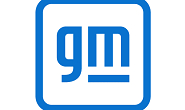Steel Markets

GM Ups Investments for Production of Electric and ICE Vehicles
Written by Laura Miller
June 9, 2023
General Motors Co. recently announced a series of investments to bolster its automobile manufacturing in the US – and it’s not all just for electric vehicles (EVs).
![]()
Internal Combustion Engines
The Detroit-based automaker plans to inject $1 billion into two of its manufacturing sites in Flint, Mich., for the production of heavy-duty trucks with internal combustion engines (ICE).
The Flint Assembly plant will receive $788 million for new tooling and equipment as well as expansions to its body shop and general assembly conveyor.
GM has slated $233 million for the Flint Metal Center for new stamping dies, press refurbishments, and new equipment.
The investment “highlights the company’s commitment to continue providing customers a strong portfolio of ICE vehicles for years to come,” GM said in a statement.
This brings GM’s announced investments into its Flint-area operations to more than $1.7 billion so far this year.
GM also announced an injection of $500 million into its Arlington Assembly plant in northern Texas for new tooling and equipment in the stamping, body shop, and general assembly areas for the production of full-size ICE SUVs.
GM said it would not be providing additional details nor timelines for the projects at this time.
EVs
To support the growth of EV use in North America, GM is teaming up with Tesla.
Beginning early next year, GM customers will be able to utilize 12,000+ Tesla superchargers throughout North America. Initially, GM drivers will have to use an adapter, but starting in 2025, GM EVs will be built with the North American Charging Standard (NACS) connector to allow direct access to Tesla superchargers.
“This collaboration is a key part of our strategy and an important next step in quickly expanding access to fast chargers for our customers. Not only will it help make the transition to electric vehicles more seamless for our customers, but it could help move the industry toward a single North American charging standard,” said GM chair and CEO Mary Barra.
EV Batteries
The second phase of a battery materials joint venture between GM and Posco Future M was recently announced. Investment in the expanded JV is expected to exceed $1 billion.
The JV, which is majority owned by battery materials company Posco Future M, was announced in 2022. Site selection has yet to be unveiled.
While the production and processing of cathode active material (CAM) and precursor CAM (pCAM) battery materials is currently highly concentrated in Asia, GM and Posco’s Ultium CAM JV will increase North American production capacity.
CAM is a key battery material representing about 40% of the cost of a battery cell. pCAM is an engineered combination of processed raw materials necessary to produce CAM, according to GM.
The Ultium CAM JV will support the annual production of approximately 360,000 GM vehicles in North America in the 2025-2030 timeframe.
“Increasing CAM production capacity and adding pCAM to our joint venture is another significant step in building a more secure and sustainable North America-focused supply chain to support GM’s fast-growing EV production needs,” stated Doug Parks, GM EVP, Global Product Development, Purchasing and Supply Chain.
“We started by establishing battery cell production in the US. From there, we have been working through the entire battery supply chain, all the way to raw material recovery. We’re building higher levels of vertical integration, driving expanded investment and helping create jobs across North America,” Parks explained.
By Laura Miller, laura@steelmarketupdate.com

Laura Miller
Read more from Laura MillerLatest in Steel Markets

CMC looks beyond Arizona micro-mill woes to long-term viability of construction mart
Despite the economic and geopolitical upheaval of the last five years, CMC President and CEO Peter Matt points out that the construction market has been an essential element of the way forward.

US importers face stricter rules under revamped S232 tariffs
“CBP expects full compliance from the trade community for accurate reporting and payment of the additional duties. CBP will take enforcement action on non-compliance," the agency said in a March 7 bulletin.

Steel exports rebound in January
US steel exports recovered to a five-month high in January after having fallen to a two-year low in December. This growth follows four consecutive months of declining exports.

Construction spending drops marginally in January
Construction spending edged down slightly in January, slipping for the first time in four months. The US Census Bureau estimated spending at a seasonally adjusted annual rate of $2,196 billion in January, down 0.2% from December’s downward revised rate. The January figure is 3.3% higher than a year ago. January’s result, despite the slight erosion, […]

HVAC equipment shipments slow in December but strong annually
Shipments of heating and cooling equipment in the US fell to an 11-month low in December, according to the latest data released by the Air-Conditioning, Heating, and Refrigeration Institute (AHRI).
